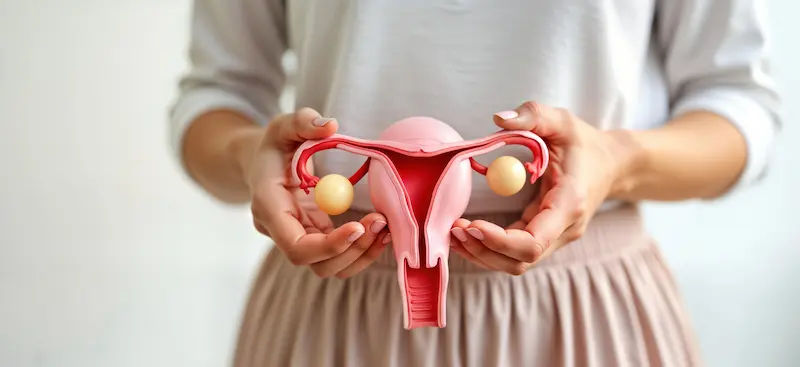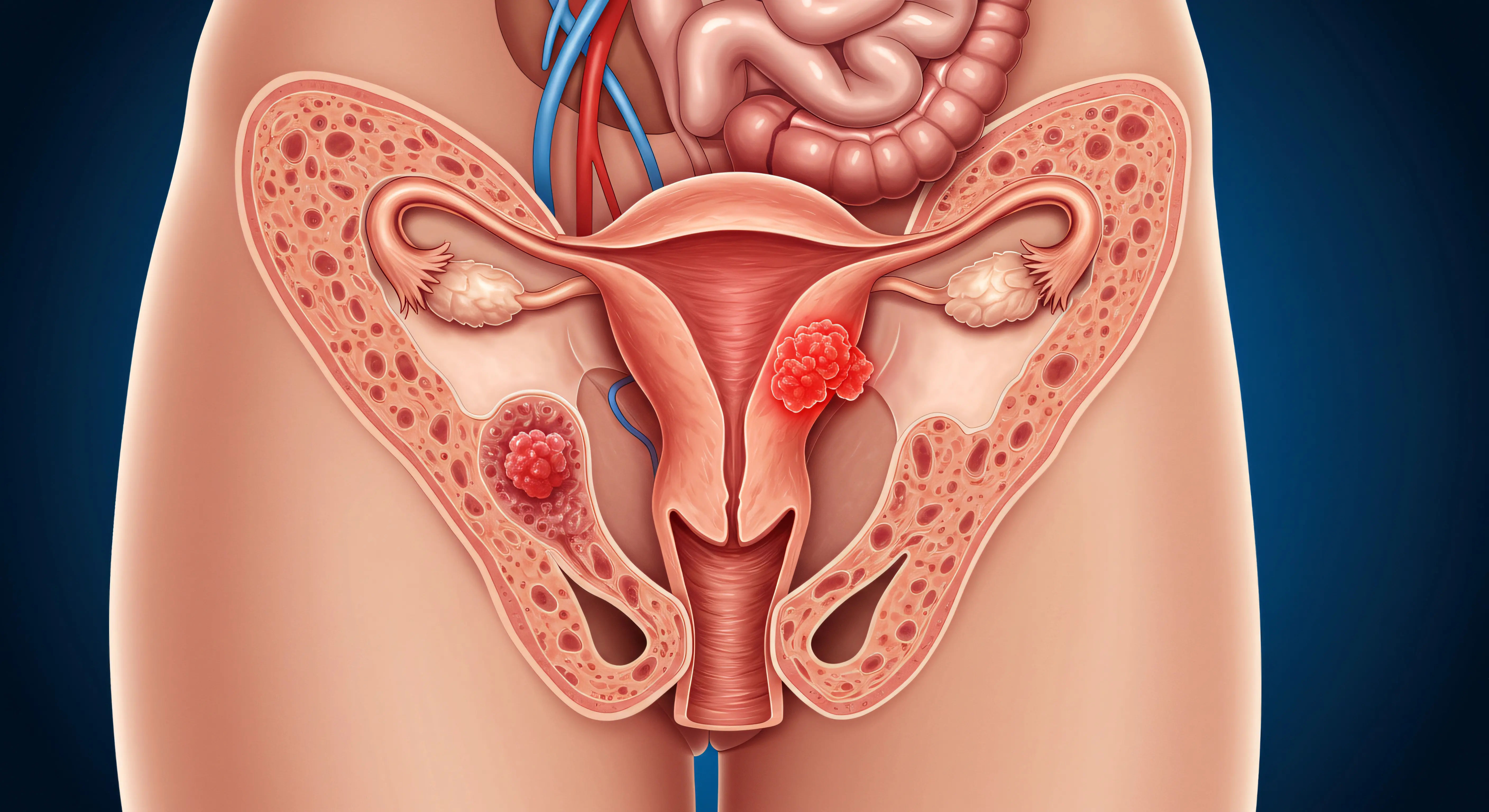How Long Do Bladder Spasms Last After Hysterectomy?
Discover how long bladder spasms may last after a hysterectomy, what causes them, and effective ways to manage discomfort during recovery for smoother healing.

Written by Dr. Shaik Abdul Kalam
Reviewed by Dr. Rohinipriyanka Pondugula MBBS
Last updated on 22nd Sep, 2025

Introduction
Undergoing a hysterectomy (surgical removal of the uterus) can bring relief from various gynacological conditions, but it may also come with temporary side effects like bladder spasms. If you're experiencing bladder spasms after your surgery, you're not alone. Many women go through this, and understanding what to expect can help ease your concerns.
What Are Bladder Spasms?
Bladder spasms are sudden, involuntary contractions of the bladder muscles, causing a strong urge to urinate, discomfort, or even pain. After a hysterectomy, these spasms can occur due to irritation or temporary changes in bladder function.
Why Do Bladder Spasms Happen After Hysterectomy?
During a hysterectomy, the bladder is moved slightly to access the uterus. This manipulation, along with post-surgical swelling, can irritate the bladder, leading to spasms. Additionally, the removal of the uterus may temporarily affect nerve signals to the bladder, causing it to contract unexpectedly.
How Long Do Bladder Spasms Last?
Most women experience bladder spasms for a few days to a few weeks after surgery. However, the duration can vary depending on:
Type of Hysterectomy: A total hysterectomy (removal of the uterus and cervix) or a radical hysterectomy (removal of the uterus, cervix, and surrounding tissues) may cause longer-lasting spasms compared to a partial hysterectomy.
Individual Healing: Some women recover faster, while others may take longer.
Pre-existing Bladder Conditions: If you had bladder issues before surgery (like overactive bladder), spasms might persist longer.
In most cases, spasms improve within 2 to 6 weeks as the bladder heals. If they last beyond 6 weeks or worsen, consult your doctor.
Symptoms of Bladder Spasms
Some of the common symptoms of bladder spasms are:
Sudden, intense urge to urinate
Frequent urination (even with little urine)
Burning or cramping sensation in the bladder
Leakage of urine (urge incontinence)
Consult Top Specialists for Personalised Tips
How to Manage Bladder Spasms After Hysterectomy?
Ways to manage bladder spasms after hysterectomy are:
1. Stay Hydrated (But Avoid Irritants)
Drink plenty of water to flush out bacteria and reduce irritation.
Avoid caffeine, alcohol, carbonated drinks, and acidic juices (like orange or tomato juice), as they can worsen spasms.
2. Pelvic Floor Exercises (Kegels)
Strengthening pelvic muscles can help control bladder function.
Squeeze the muscles you use to stop urine flow, hold for 3-5 seconds, then relax. Repeat 10-15 times, 3 times a day.
3. Use a Heating Pad
A warm compress on your lower abdomen can relax bladder muscles and ease discomfort.
4. Medications (If Needed)
Your doctor may prescribe antispasmodic medications (like oxybutynin) to relax the bladder.
Over-the-counter pain relievers (like ibuprofen) can help with discomfort.
5. Avoid Straining
Don’t push while urinating. Let urine flow naturally.
Sit comfortably on the toilet and relax your pelvic muscles.
6. Bladder Training
Gradually increase the time between bathroom visits to retrain your bladder.
When to See a Doctor?
Contact your healthcare provider if:
Spasms last longer than 6 weeks.
You experience severe pain, blood in urine, or fever (signs of infection).
You have difficulty emptying your bladder completely.
Conclusion
Bladder spasms after a hysterectomy are common and usually temporary. With proper care, most women see improvement within a few weeks. If symptoms persist or cause concern, don’t hesitate to seek medical advice. If you're experiencing prolonged bladder spasms or have concerns about post-hysterectomy recovery, you can consult a specialist on Apollo 24|7 for personalised advice.
Consult Top Obstetrics and Gynaecology Surgeon
Consult Top Specialists for Personalised Tips

Dr. Vineet Mishra
Infertility Specialist
36 Years • MD, Phd, DSc
Ahmedabad
Apollo Hospitals - Gandhinagar, Ahmedabad, Ahmedabad

Dr. Karuna Ratwani
Obstetrician and Gynaecologist
11 Years • MBBS, MS( Obstetrics & Gynaecology), F.MAS, FICRS Advanced Diploma in Minimal Access surgery Fellow of International College of Robotic Surgeons Diploma in Reproductive Medicine, Kiel-Germany Masters in Cosmetic Gynaecology , Greifswald-Germany Masterclass in Obstetrics & Gynaecology Ultrasound ( ISUOG, UK)
Delhi
Apollo Hospitals Indraprastha, Delhi
(25+ Patients)

Dr. Plabani Sarkar
Obstetrician and Gynaecologist
17 Years • Advanced Diploma in Reproductive Medicine, University of Schleswig Holstein Kiel, Germany 2024 Fellowship - Reproductive Endocrinology and Infertility, PGIMER Chandigarh 2021 – 2022 Specialized in female endocrinology, endometriosis & male infertility. Certification in Reproductive Genetics,Valencia,Spain 2024 Certification in Oncofertility, American Society of Reproductive Medicine 2024 Certification in Obstetrics & Gynecological Ultrasounds,NHS-UK(Royal College of Radiologists) 2024 D.N.B. - Obstetrics & Gynaecology, NBE, New Delhi 2021 MD - Obstetrics & Gynaecology, AIIMS, New Delhi 2014 - 2016 Specialized in Laparoscopic, Hysteroscopic procedures & Infertility treatments. MBBS, R.G. Kar Medical College, Kolkata 2007 - 2013 Honours in Preventive & Social Medicine. Gold Medal in Forensic Science & Medicine.
Bengaluru
Apollo Clinic, Sarjapur Road, Bengaluru

Dr. Tanvi Gaba
Obstetrician and Gynaecologist
9 Years • MBBS, DGO
New Delhi
AAKASH MEDSQUARE, New Delhi

Dr. Neha Jain
Obstetrician and Gynaecologist
18 Years • MBBS , DGO (Obstetrics & Gynaecology)
New Delhi
Dr. Jain's Pathlab and Clinic, New Delhi
Consult Top Obstetrics and Gynaecology Surgeon

Dr. Vineet Mishra
Infertility Specialist
36 Years • MD, Phd, DSc
Ahmedabad
Apollo Hospitals - Gandhinagar, Ahmedabad, Ahmedabad

Dr. Karuna Ratwani
Obstetrician and Gynaecologist
11 Years • MBBS, MS( Obstetrics & Gynaecology), F.MAS, FICRS Advanced Diploma in Minimal Access surgery Fellow of International College of Robotic Surgeons Diploma in Reproductive Medicine, Kiel-Germany Masters in Cosmetic Gynaecology , Greifswald-Germany Masterclass in Obstetrics & Gynaecology Ultrasound ( ISUOG, UK)
Delhi
Apollo Hospitals Indraprastha, Delhi
(25+ Patients)

Dr. Plabani Sarkar
Obstetrician and Gynaecologist
17 Years • Advanced Diploma in Reproductive Medicine, University of Schleswig Holstein Kiel, Germany 2024 Fellowship - Reproductive Endocrinology and Infertility, PGIMER Chandigarh 2021 – 2022 Specialized in female endocrinology, endometriosis & male infertility. Certification in Reproductive Genetics,Valencia,Spain 2024 Certification in Oncofertility, American Society of Reproductive Medicine 2024 Certification in Obstetrics & Gynecological Ultrasounds,NHS-UK(Royal College of Radiologists) 2024 D.N.B. - Obstetrics & Gynaecology, NBE, New Delhi 2021 MD - Obstetrics & Gynaecology, AIIMS, New Delhi 2014 - 2016 Specialized in Laparoscopic, Hysteroscopic procedures & Infertility treatments. MBBS, R.G. Kar Medical College, Kolkata 2007 - 2013 Honours in Preventive & Social Medicine. Gold Medal in Forensic Science & Medicine.
Bengaluru
Apollo Clinic, Sarjapur Road, Bengaluru

Dr. Tanvi Gaba
Obstetrician and Gynaecologist
9 Years • MBBS, DGO
New Delhi
AAKASH MEDSQUARE, New Delhi

Dr. Neha Jain
Obstetrician and Gynaecologist
18 Years • MBBS , DGO (Obstetrics & Gynaecology)
New Delhi
Dr. Jain's Pathlab and Clinic, New Delhi




